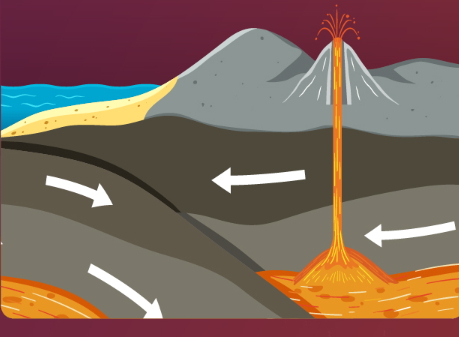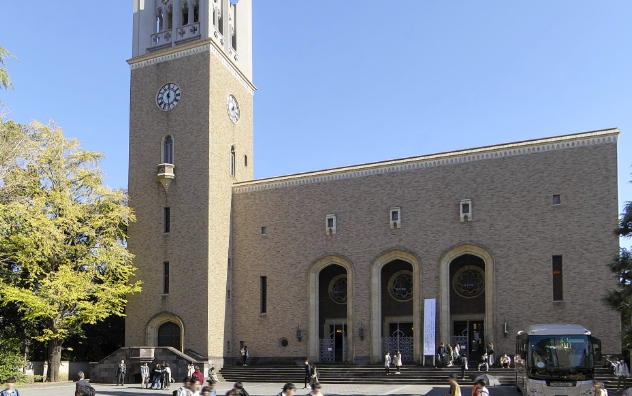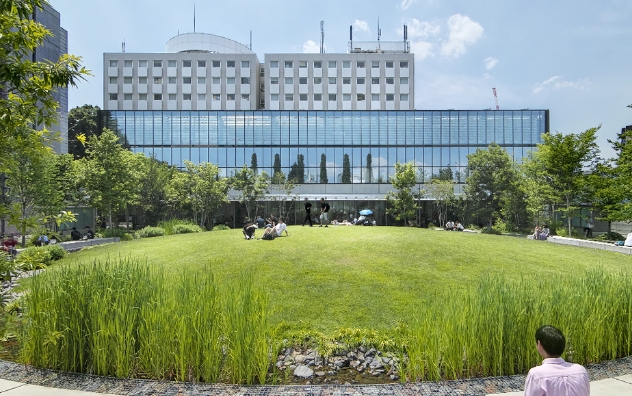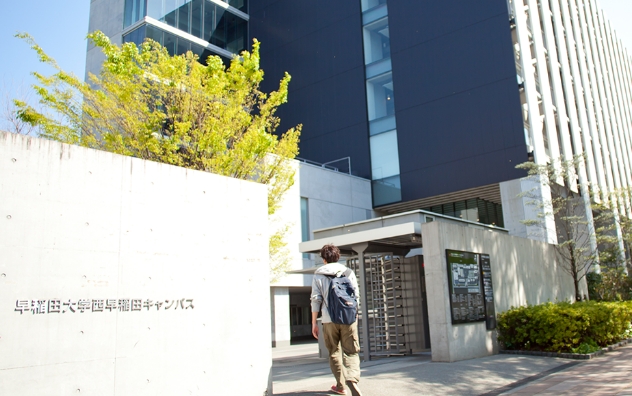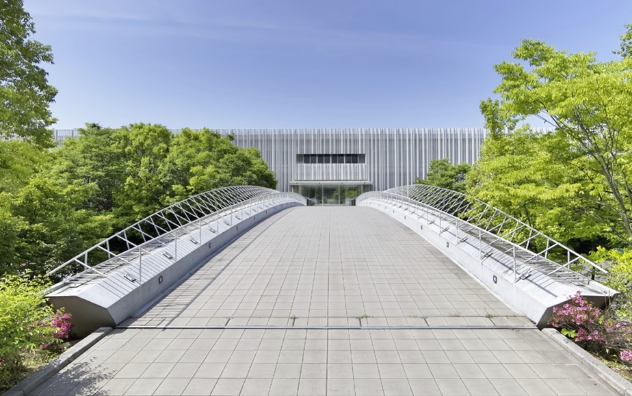Unveiling Japan’s Geological History Through Volcanogenic Massive Sulfide Deposits
Mon, Jan 27, 2025-
Tags
Unveiling Japan’s Geological History through Volcanogenic Massive Sulfide Deposits
Researchers unveil key insights into Japan’s geological history through Re–Os dating of volcanogenic massive sulfide deposits
Dating key tectonic events in Japan’s geological history has long been often challenging due to poor microfossil preservation from intense heat due to metamorphism. Researchers tackled this by using Re–Os isotope geochronology on Besshi-type volcanogenic massive sulfide deposits (Makimine and Shimokawa deposits) associated with sediment-covered mid-ocean ridges. Their findings revealed the timing of ridge subduction—when one tectonic plate was forced beneath another—a process that shaped Japan’s landscape and provided new insights into its geological evolution.
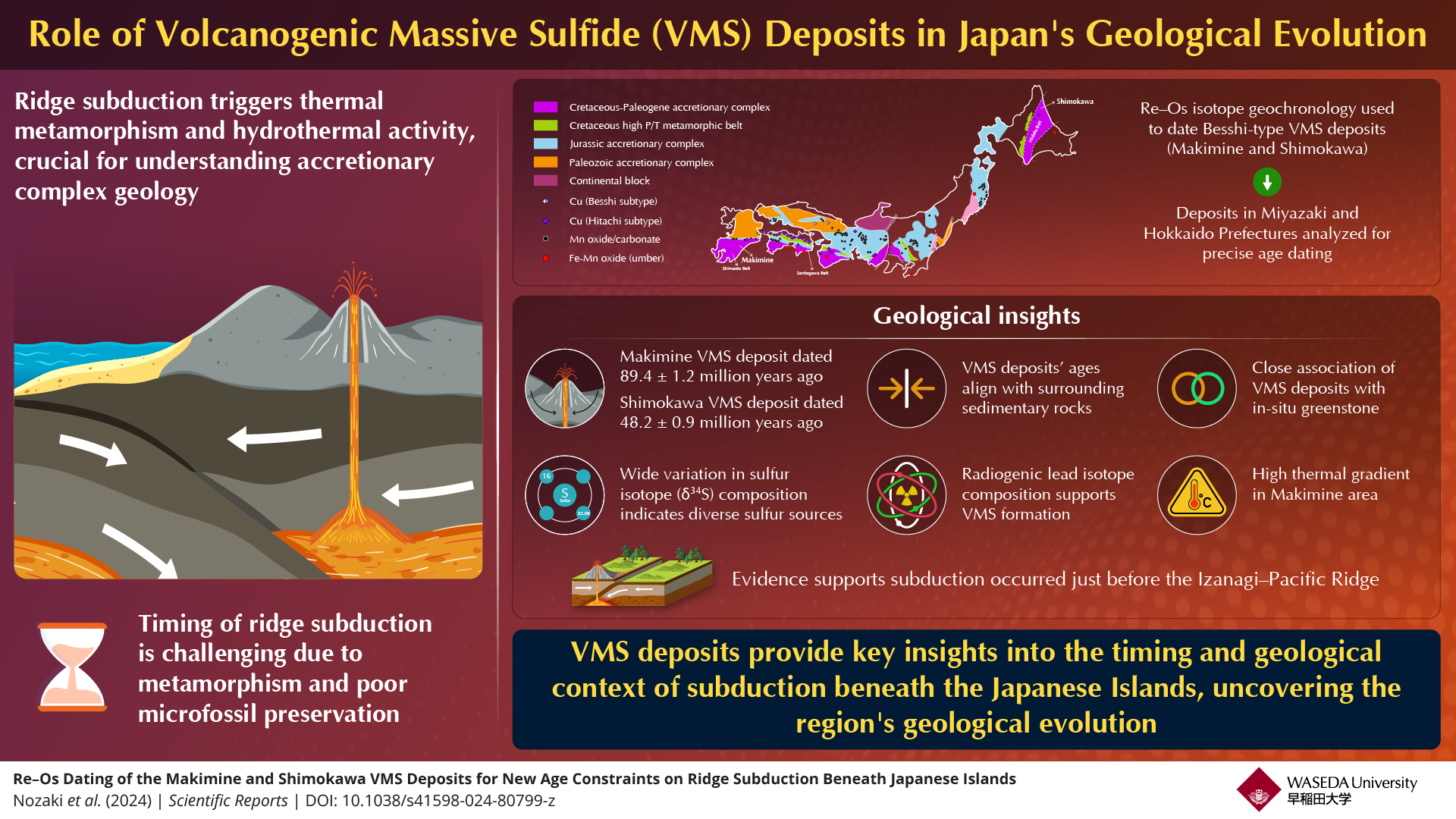
Image title: Unlocking Japan’s geological history: Insights from volcanogenic massive sulfide deposits
Image caption: Explore the groundbreaking study that uses Re–Os isotope dating to reveal the timing of key tectonic events beneath Japan. Learn how Besshi-type volcanogenic massive sulfide (VMS) deposits are helping scientists understand ridge subduction, volcanic activity, and the formation of Japan’s unique geological landscape. Discover the role of mineral deposits in shaping Earth’s history and their potential in future mineral exploration.
Image credit: Professor Tatsuo Nozaki from the Waseda University
License type: Original content
Usage restrictions: Cannot be reused without permission
The Earth’s surface is constantly reshaped by the movement of tectonic plates, which make up the continental crust on which we are living. These tectonic plates are in continuous motion, and when one plate is pushed under another, it is called “subduction.” These processes play a crucial role in shaping the Earth’s landmasses, including the islands of Japan, over several hundred million years. Studying ancient mineral deposits offers a valuable way to uncover the timing of these events. However, determining the precise timing of these tectonic events has long been a challenge due to the destruction of microfossil evidence caused by intense heat.
With the growing interest in understanding Japan’s detailed geological history, accurately determining the timing of past tectonic events has become increasingly important. To address this challenge, a research team led by Professor Tatsuo Nozaki (Waseda University, Japan Agency for Marine-Earth Science and Technology (JAMSTEC), The University of Tokyo, and Kobe University) collaborated with Associate Professor Yutaro Takaya (The University of Tokyo, Waseda University, JAMSTEC), Adjunct Assistant Professor Ken Nakayama (Kochi University), and Professor Yasuhiro Kato (The University of Tokyo, Chiba Institute of Technology) to utilize mineral deposits for precisely dating these tectonic processes.
Their study focused on Besshi-type volcanogenic massive sulfide (VMS) deposits distributed in Miyazaki and Hokkaido Prefectures. VMS deposits are rich in sulfide minerals and typically form near the ocean floor where volcanic activity occurs. These deposits, associated with in situ greenstone (a type of metamorphosed volcanic rock (basalt)), provided the researchers with an opportunity to establish the timing of ridge subduction beneath the Japanese Islands. The team used Re–Os (rhenium-osmium) isotope geochronology, a technique that allows scientists to date the age of the mineral deposits with great precision. Their findings were published in the journal of Scientific Reports on 3 December, 2024.
Ridge subduction is an important geological process that triggers volcanic activity, thermal metamorphism (the alteration of rocks by heat), and hydrothermal activity (chemical reactions between hydrothermal fluids and rocks). However, dating ridge subduction has been often difficult because the heat from this process destroys fossil records. To overcome this challenge, the researchers focused on Besshi-type VMS deposits that formed on sediment-covered mid-ocean ridges. The ages of these deposits can serve as precise markers for the timing of subduction.
Using the Re–Os isotope method, the team dated the Makimine VMS deposit in Miyazaki Prefecture to 89.4 ± 1.2 million years ago and the Shimokawa VMS deposit in Hokkaido Prefecture to 48.2 ± 0.9 million years ago. These deposits were formed just before the Izanagi–Pacific Ridge was subducted beneath Japan. Several factors supported this conclusion, such as the deposits’ ages matching those of the surrounding sedimentary rocks, their close association with in situ greenstone, and the absence of chert (sedimentary rock originating from pelagic sediment). Evidence from sulfur and lead isotopes, along with high thermal gradients in the Makimine area, further confirmed their formation in a mid-ocean ridge environment before subduction.
“These VMS deposits are essential for understanding ridge subduction timing beneath Japan,” said Nozaki. “Dating them has allowed us to pinpoint when this tectonic event occurred, offering new insights into Japan’s geological evolution.”
“This study not only sheds light on the timing of ridge subduction but also opens new possibilities for mineral exploration. Accurate dating could help identify new mineral deposits formed by similar tectonic processes, in Japan and globally,” Nozaki concluded.
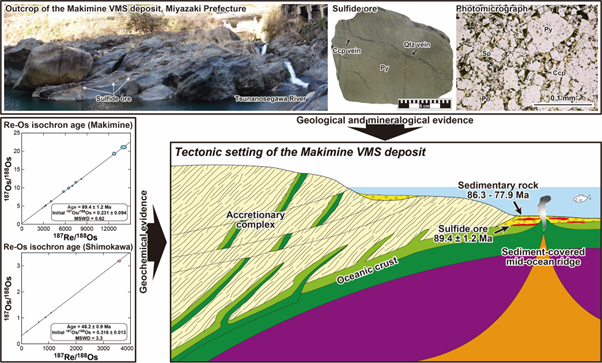
Image title: Volcanogenic massive sulfide deposits beneath Japanese Islands
Image caption: Utilization of Re–Os isotope dating to reveal the timing of key tectonic events beneath Japanese Islands. Learn how Besshi-type volcanogenic massive sulfide (VMS) deposits are helping scientists understand ridge subduction, volcanic activity, and the formation of Japan’s unique geological landscape. Discover the role of mineral deposits in shaping Earth’s history and their potential in future mineral exploration.
Image credit: Professor Tatsuo Nozaki from the Waseda University
License type: Original content
Usage restrictions: Cannot be reused without permission
Reference
Title of original paper: Re–Os dating of the Makimine and Shimokawa VMS deposits for new age constraints on ridge subduction beneath Japanese Islands
DOI:10.1038/s41598-024-80799-z
Journal: Scientific Reports
Article Publication Date: 3 December 2024
Authors: Tatsuo Nozaki1,2,3,8, YutaroTakaya1,4,5, Ken Nakayama6, and Yasuhiro Kato4,7
Affiliations:
1Submarine Resources Research Center, Research Institute for Marine Resources Utilization, Japan Agency for Marine-Earth Science and Technology (JAMSTEC), Japan
2Frontier Research Center for Energy and Resources, School of Engineering, The University of Tokyo, Japan
3Department of Planetology, Graduate School of Science, Kobe University, Japan
4Department of Systems Innovation, The University of Tokyo, Japan
5Faculty of Science and Engineering, Waseda University, Japan
6Marine Core Research Institute, Kochi University, Japan
7Ocean Resources Research Center for Next Generation, Chiba Institute of Technology, Japan
8Faculty of Science and Engineering, Waseda University, Japan
About Professor Tatsuo Nozaki
Dr. Tatsuo Nozaki is a Professor at Waseda University and a visiting researcher at The University of Tokyo, Japan. His research focuses on the metallogenic study of seafloor mineral resources including seafloor hydrothermal deposit and their natural analogs on land such as volcanogenic massive sulfide (VMS) deposits, together with Re–Os isotope dating and paleo-environmental studies using sedimentary rocks. He has authored numerous publications, including work on the genesis of mineral deposits and their relationship with global environmental changes. He is a member of academic societies such as the Society of Resource Geology, Society of Economic Geologists, Geological Society of Japan, Geochemical Society of Japan, and Japan Geoscience Union.


